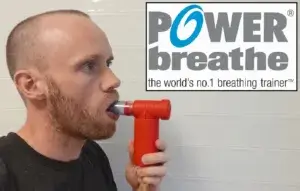I own what is now called the “Powerbreathe Classic” but when I purchased it 12 years ago it was the only version they sold. After intermittent use it lay in my cupboard until 6 weeks ago when I dusted it off. I’ve been using it twice a day ever since with some pretty impressive results.
POWERbreathe Classic IMT
The Powerbreathe is an inspiratory muscle trainer (that’s what the IMT stands for), designed to strengthen the muscles you use to breathe in. It does this by providing resistance which can be set anywhere from level 1 to 9. The standard protocol is to complete 30 breaths and to do this twice a day. Touted as the “dumbbell for your diaphragm”, by strengthening the muscles it makes breathing easier both during exercise and at rest.
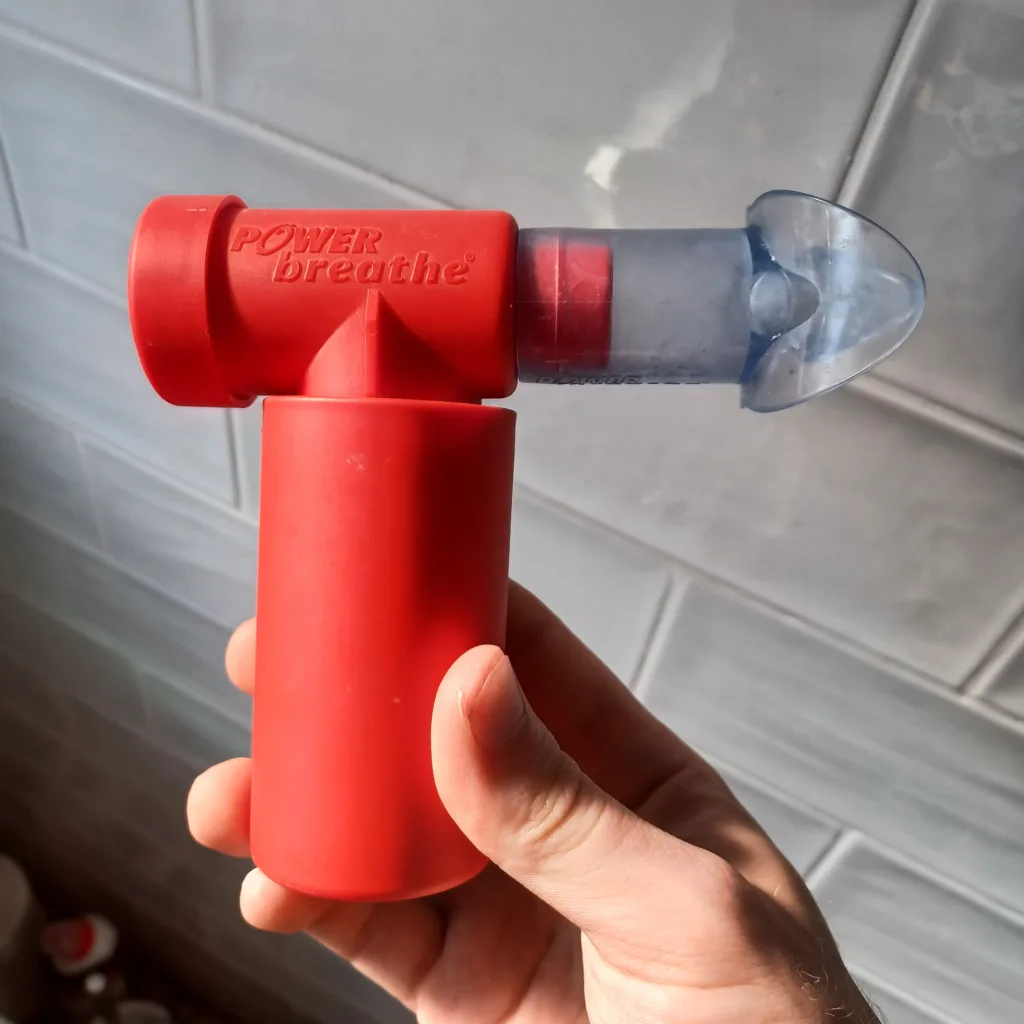
The Experiment
I initially set out to improve my respiratory rate, the number of breaths I take per minute at night. This is something my Whoop strap and Oura ring both measure and report back to me each morning. Aside from periods of illness it’s a metric that doesn’t change much over time. For that reason, I thought if the Powerbreathe managed to change my respiratory rate it would be very obvious (spoiler alert: it didn’t).
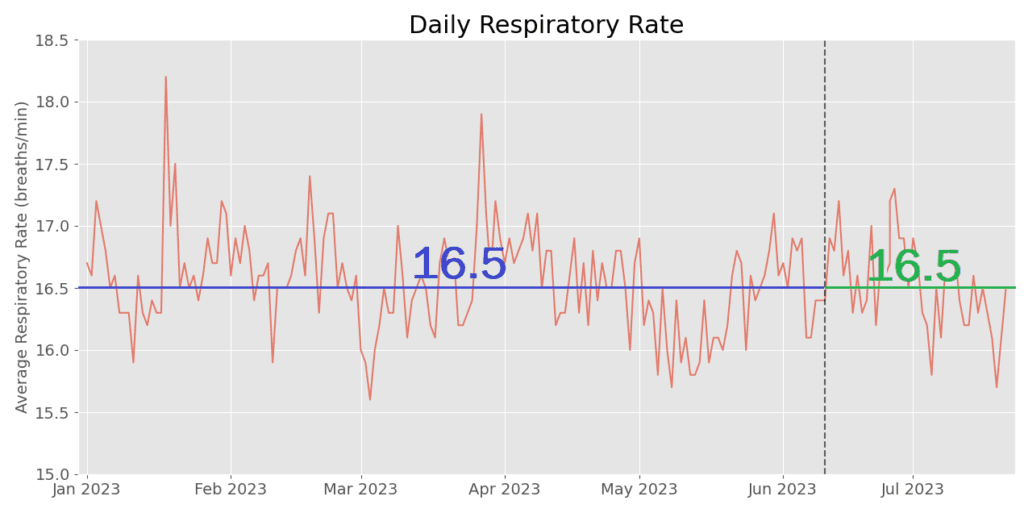
The standard Powerbreathe protocol involves 30 consecutive breaths, twice a day. The two “workouts” need to be at least 6 hours apart, as that’s how long the muscles need to recover. The technique is generally to have a more active and deliberate inhale, before relaxing for a natural exhale. An optional nose clip is provided, and you’re also welcome to simply pinch your nose during the exercise.
I stored my Powerbreathe in the bathroom and completed my 30 breaths after brushing my teeth – typically around 8-9am and again at 8-9pm. In the final few weeks I tried moving the second session earlier to leave a longer gap before bed.
My Results – Heart Rate Variability
It was actually two of the other metrics my wearables measure, HRV and resting heart rate, that were affected by my use of the Powerbreathe device. HRV stands for heart rate variability, the variation in times between heart beats. It’s actually better to have high variability (a higher number), as it means your body is ready to adapt to the challenges of the day. It’s less stable than respiratory rate and my own range is from below 40 when ill, to 90+ on really good days, with my average ~67ms.
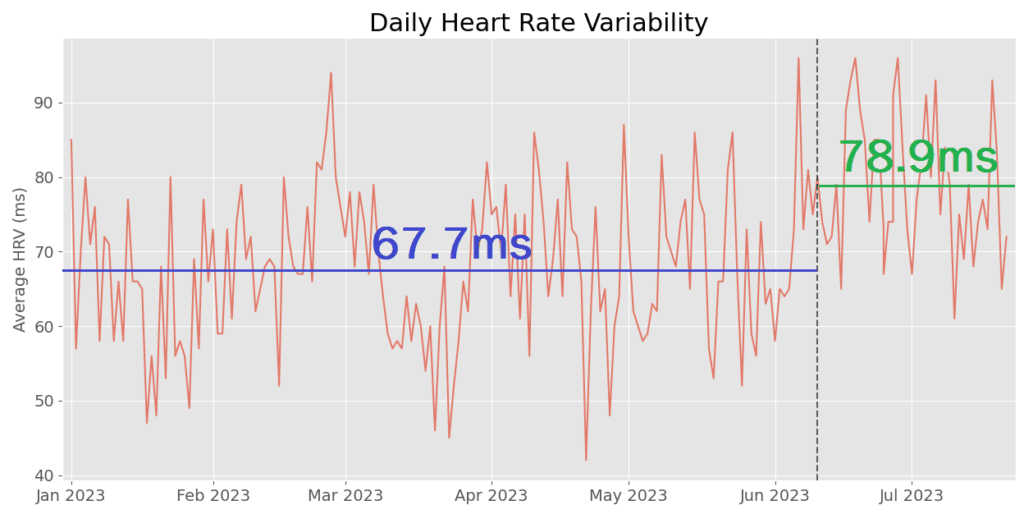
Within five days I noticed a step change in my HRV, something I didn’t even know was going to be affected. It’s rare for me to hit 90 but I was eventually hitting it on a weekly basis. Using the Powerbreathe for six weeks has increased my HRV by 12.2ms compared to the previous six months.
My Results – Resting Heart Rate
If you’re not familiar with HRV then it may be more meaningful to look at my resting heart rate, which had a similarly dramatic improvement.
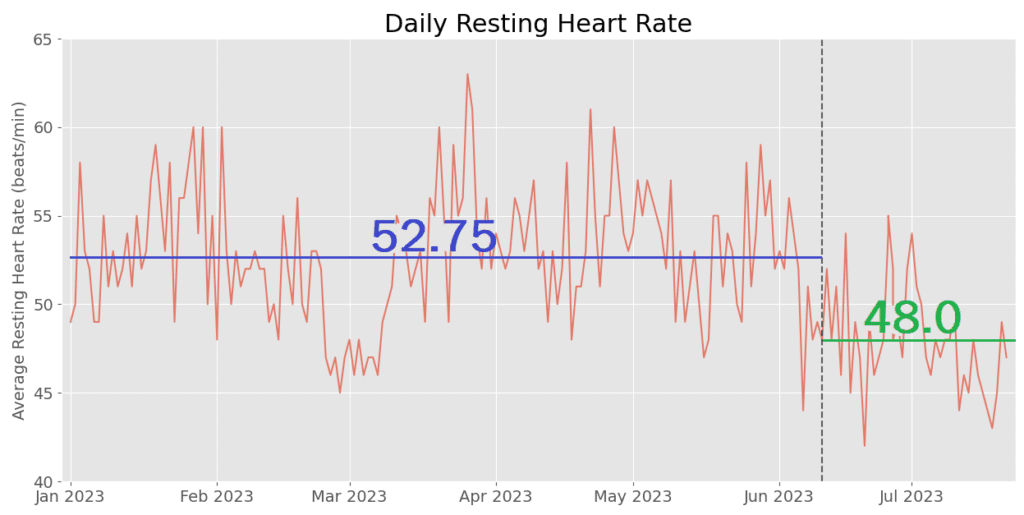
My resting heart rate dropped by almost 5 beats per minute, another impressive result from only 6 minutes a day of breathwork.
So does that mean I’m actually any fitter? Luckily I had just completed my annual fitness test for 2023, which included both a submaximal and maximal estimated VO2max test.
The submaximal VO2max test was the Queen’s College step test. This saw no change and both times my estimated VO2max came out at 56.3 ml/kg/min.
The maximal VO2max test was the Cooper test. This involves running as far as you can in 12 minutes. After six weeks with the Powerbreathe I ran an additional 102 metres (2908m vs 2806m), increasing my estimated VO2max from 51.5 to 54.7 ml/kg/min.
Conclusions
I still can’t quite believe the results were so dramatic. I really hope they’re as impressive for other people who try this out. Having read one of the Powerbreathe research papers it seems like 6 weeks is the sweet spot for considerable improvements. That paper involved the 2 x 30 breath protocol only 6 days a week, with further improvements after 9 weeks. They also demonstrated that 2 days a week is effective as a maintenance phase, with subjects retaining the training effect.
Technically the heavy resistance (red) should only be used after reaching the highest level on the medium resistance (blue) device. I found the heavy resistance very difficult, only progressing from level 1 to 2 over the course of six weeks. If I hadn’t already purchased the heavy resistance I would have probably started with the medium. There were also times when it was tedious to follow the routine. Completing 30 breaths following a heavy evening meal is not dissimilar to running after one.
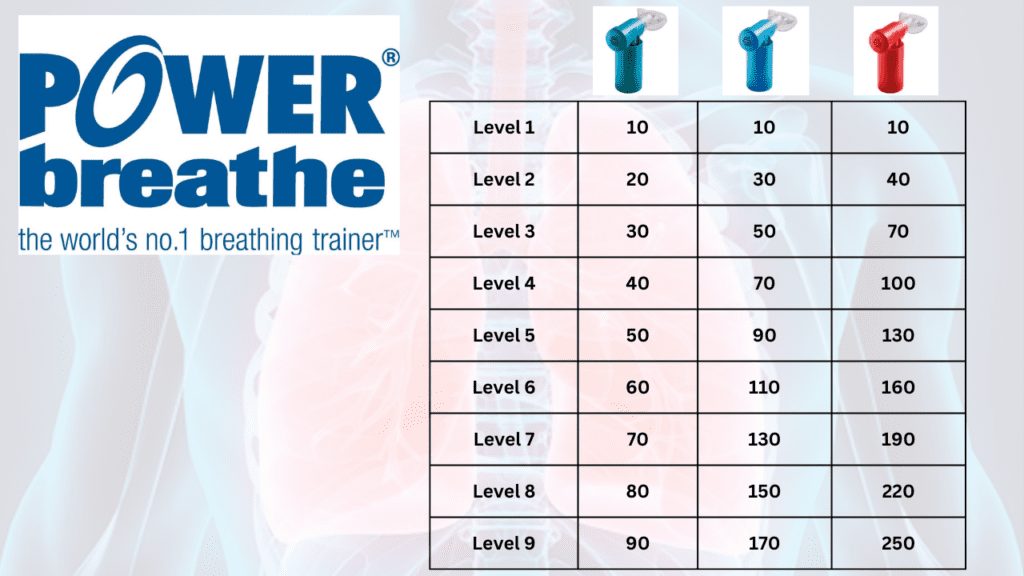
As you can see above, the light, medium and heavy IMT devices all start on the same difficulty. The difference is in the increase in resistance with each additional level. If you have no breathing problems and exercise regularly, the medium should suffice.
Overall I’m delighted to have stumbled upon this gem and will be continuing with a 2-3 day a week protocol for the foreseeable future.

